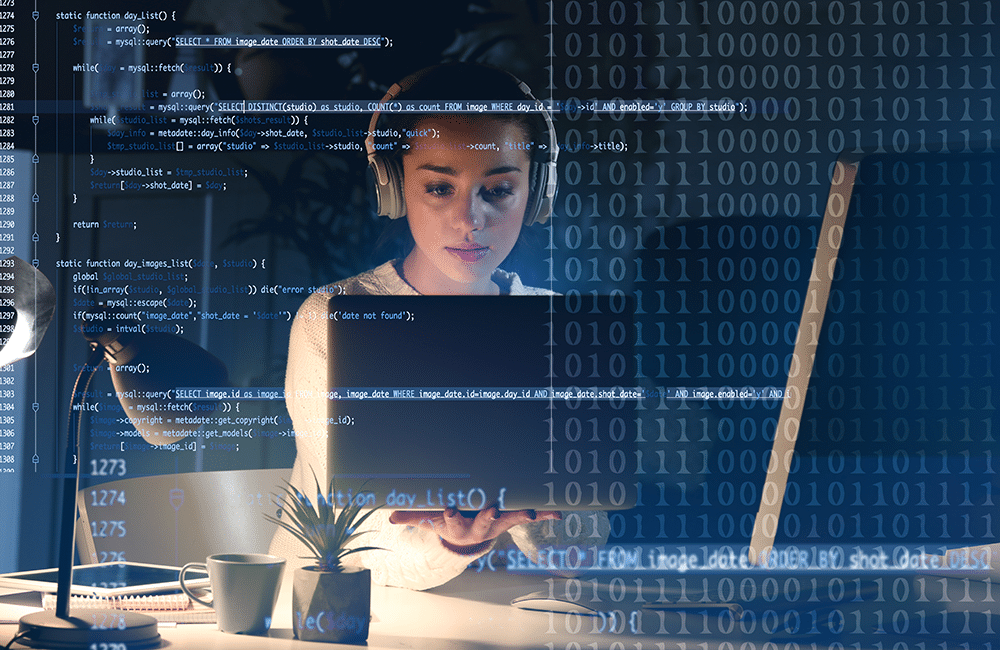5 Female Pioneers of Software Development We’re Grateful For This Thanksgiving


When we think about the average stereotypical developer, a couple of images quickly pop into mind. First off, he probably is on the younger side, early to mid-20s, likes a lot of pop culture icons like Dr. Who, has some cool gadgets, and most commonly, is a he.
Overwhelmingly, the technical side of companies ranging from startups to enterprises is predominantly male. Recently, many of the largest tech companies provided data on how the majority of their female employees don’t work in the development or technical positions at their company. Google for their part declared that only 17 percent of its technical staff is female.
This lopsided workforce was not always the case. Lost in the records of programmer history is that women actually played some very key roles in the early days of coding. It is only in recent years that their stories are being told, with movies like Hidden Figures shining a light on the early heroines of code.
In appreciation and recognition of their efforts and contribution, we would like to highlight a couple of the female programmers that we are thankful this year.
Ada Lovelace
If you were to ask the majority of software developers who wrote the first bit of code I doubt they will be able to give you the right answer. It is generally understood that the first code was written by Ada Lovelace in 1852.
She was one of the top mathematicians at the time which most women didn’t have the opportunity to take part in.
While working with English mathematician Charles Babbage, who designed the modern computer which he called the Analytical Engine, Lovelace identified that this machine had more purposes than just calculating.
She saw the potential for it to actually be manually programmed to run a series of actions similar to how modern programming is today. She wrote the world’s first machine algorithm for an early computing machine that existed only on paper.
We remember her contributions to science and engineering in the celebration of Ada Lovelace Day on October 13. It is a day set aside to learn about women in science, technology, engineering, and mathematics. So if you missed it last month, this is your chance to give the lady her due.
Grace Hopper
A member of the team of original programmers for the Harvard Mark I, the OG of computers, Rear Admiral Grace Hopper is well known for helping to create the first all-electronic digital computer called the UNIVAC.
Her storied career as a pioneer of programming includes such accomplishments as building one of the first compiler tools for programming in English. Her compiler, later called a linker, allowed software written in English to be converted into machine-readable code.
While it took years before her ideas were accepted, through her perseverance, she developed what we now know of programming using words rather than numbers. This paved the way for programming to more than just a small group of military and academic types. She was a strong believer in opening up computing to business and non-scientific applications, which could be written using less advanced programming languages.
She is known as the “Queen of Software” and is credited with coining the term computer bug. Hopper is also probably one of the few programmers to have a destroyer named after her. She received the Presidential Medal of Freedom for her contributions to the advancement of computing.
Margaret Hamilton
Margaret Hamilton, a self-taught programmer with advanced math degrees, was the Director of the Software Engineering Division at MIT which developed the Apollo Guide Computer.
Her work was instrumental for the Apollo 11 mission as her team of programmers had to program this project from scratch. The team wrote the code for the first portable computer. Her team’s work made the first moon landing possible and created a new industry as we see the space industry today.
Hamilton became an expert in systems programming and she went on to found a number of companies that pushed forward systems designs and put advanced math theories into practice, many with military applications. Like Grace Hopper, Hamilton also received the Presidential Medal of Freedom for her contributions to the space program.
She’s also credited with coining the term “software engineering” and taking the profession to its place of respect.
Kathleen Booth
Kathleen Booth was one of the first computer programmers to develop an assembly language, helping programming move from inputting 0s and 1s to the programming languages we actually are using today. She designed and was the key programmer on three early computers: ARC, SEC and APE(X)C.
During her career Booth published work on programming techniques, languages which are used in today’s modern computers.
She also contributed to the early work of natural language processing and neural networks. Given her accomplishments all occurred before 1962, Booth is truly an early leader of the software movement.
Barbara Liskov
Barbara Liskov worked on many different artificial intelligence projects and became the first woman to earn a doctorate in computer science at Stanford University.
Through her work, we can see her contributions to the advancement of coding as we know it today. She directed the design and implementation of CLU, the creation of the first high-level language Argus to support data abstraction and her current research focus is in Byzantine fault tolerance and distributed computing.
We can see her many innovations in every modern programming language from Java to C#, and C++, have impacted the way that code gets written.
In 2008, Liskov won the A.M. Turing Award, one of the greatest honors in computer science.
What Will Women in Programming Accomplish Next?
Despite the modern stereotypes in development that we see today, women in development can reclaim their place in the technosphere, making important contributions for the way that we build software for the future.
